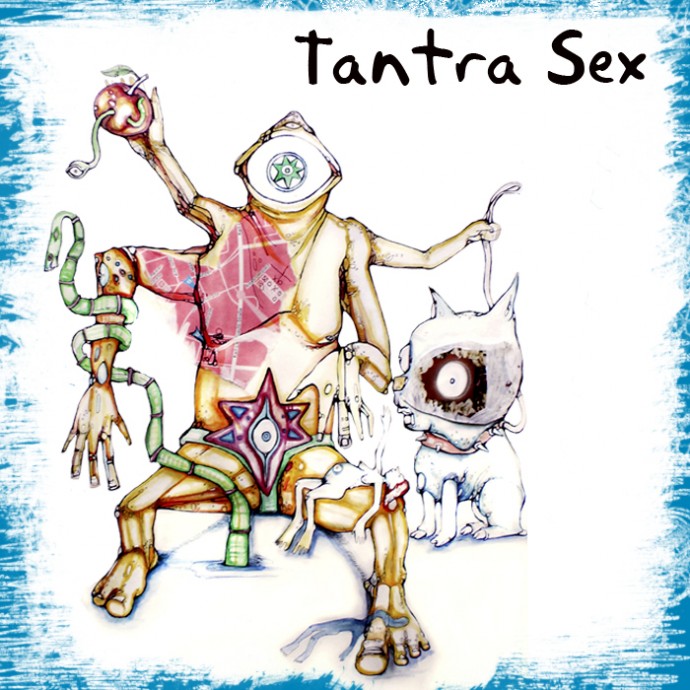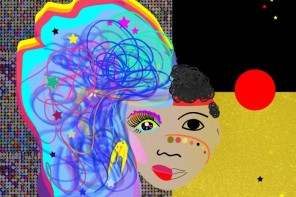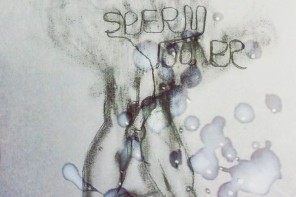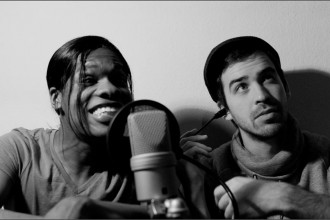Over the last decade, the practice of tantra had a rise of popularity in Germany and especially in Berlin, a trend somewhat reminiscent of the boom of yoga a few years earlier. Considering that tantra has a pretty broad scepter of practices and beliefs, and furthermore offers a wide range of interpretations, there are legit reasons to question the motivations behind its increase of adepts and what there actually is to find at the essence of “neo-tantra”. Is it a sincere philosophical quest, the outlook for sensual pleasure or has it more to do with the curiosity generated by the prominence of sexual fantasies in the prevailing perception of tantra? The following interview seems to indicate that they are different shades of grey to consider. Having spent the main part of his life on a quest for strength and spiritual enlightening, our subject yet came to tantra almost randomly or at least on a very secular way. Studying and reading his way through the ancient tantric literature, he praises a pragmatic and highly hedonistic approach. Nils Kriedner earns his living as a tantra masseur, teacher and author. We spoke with him about how he came to tantra, what it means to him and how it changed him.
I was 11 or 12 when I first became interested in the relationship between body and spirit. I was already practicing Judo for six years and would soon dive into further martial arts techniques like Bujinkan, and into meditation. Back then, I understood martial arts as a way to gain strength and self confidence, to pursue the role model of the knight. I fought to eradicate any kind of weakness. In meditation, I saw the spiritual counterpart to this training. I started to attend courses of Zen Buddhism which is the most arduous way into meditation. The notion of “enlightening” was very important to me.
After High-School, I went to Japan for intensive martial arts practice and my motivations for training then began to evolve. I was always looking for the most effective way to fight but at that point, I start to see it more like art or a creative process, combining different techniques and creating new movements of my own. Ultimately, the intensive training in Japan brought me to the point where I felt something I couldn’t describe better than total affiliation, melting, or fusion, like I would see myself moving from above. It was a wonderful organic feeling. Then I knew: “This is what I want”! But I would soon realize that they’re more appropriate way to reach this status. That’s how I turned to yoga.
It wasn’t yoga that led me to tantra, at least not on a direct path. But it led me to my professional vocation: massage. I placed adverts in the local newspapers – it was still the nineties – but almost all requests came from men looking for erotic massages. So I began to mention in my ads that I do no dispense this kind of service, but ended up receiving almost no calls at all. I asked myself: “Are you really deeply objected to do that, or do you only pass on it because you’ve been told that’s no good?” Finally I decided to give it a try, and soon made almost all of my business with erotic massages. It was a challenging and interesting experience, but I’m glad not being into it anymore and wouldn’t do it again.
One day, a customer told me about tantra massages, about feathers and silk towels and stuff like that, and how great it has to be. I really didn’t know what to think of it in the first place. Tantra-insitutes were very hard to find back then and I had to travel a few hundred kilometers to go to my first tantra massage; but it was just awesome. It lasted three hours; everything happened so slowly, softly, sweetly, it was a suite of sensual elements. She touched me everywhere, with a very different approach than random erotic massages.
Erotic massages tend to solely one aim: jerking off. Tantra on the contrary is not meant to provide that kind of orgasm, although it doesn’t forbid it. It’s simply about taking time, letting yourself go and see what happens. When the contact is innocent, you can make whole new experiences. Most people undergo a terrible routine in their sexual activity, and oversee all those small things: ecstasy is huge, but starts in the very little things and has to grow out of them by an innocent exploration of body and senses. I’ll always remember the power of ecstatic, orgasmic waves I felt through my whole body while kissing one of my partners, slowly, for more than an hour. The practice of Tantra has improved my sexual life but not in a manner of quantity, only of quality. I do not actually have more sex than before, but rather more and better sex with other people, and less with myself.
Of course, the liberation of sexuality is a process. People have a thousand concepts about what sexuality should or shouldn’t be, and it’s not like “Oh, I’m now going to put all those tabus away.” According to a fellow tantra teacher, every tantrist should be able to live and explore his sexual desire right in the middle of Alexanderplatz. I wouldn’t mind if it wasn’t for legal considerations.
Obviously, tantra helped me overcome terrible shyness. Previously, I would never have been able to talk about desire or sexuality to anyone, not even my partners. As a teenager, even masturbation filled me with unbearable guilt. At age 13, I remember having prayed to god -while I wasn’t so much of a believer- to free me of this horrible sin.
The expectations of my clients are extremely diverse. Some just heard of tantra as something where you can live new exotic erotic experiences. More interestingly however, some of my customers are women that endured deeply traumatizing sexual experience like rape. Those traumatisms are anchored deep in their tissues, and tantra can solve that. One of these victims had her body sending signs of fear and anxiety when she was cuddling with her husband, despite being fully aware that she had nothing to fear from him. I also remember working with a pain-shaman, who was suffering physically and nervously from the rape her mother endured during world war. After two years spent in total abstinence, she wanted to re-start her sexual life and therefore came to see me.
The fervor of desire is often seen as an obstacle in various traditions while tantra encourages and channels it. Tantra is actually all about finding the way to more desire, ecstasy and bliss. The most simplistic tantric exercise is to hold on, stop your routine and to ask yourself “What could I do right now to feel more joy and delectation?” This does not apply solely on sex, although it obviously starts there for most people. You can practice tantra while eating or walking in the street, by asking yourself how to intensify this experience. When I take a shower and feel the hot beam of water, I’ll try to enhance this sensation by breathing deeply and letting tones out of me. I have a passionate love for coke and when I drink some, I can potentially enjoy a strong sensation. I take time. I desire the coke. And the coke also desires to still my thirst. We will come together and eventually become one.
The human body is basically always in ecstasy. Babies are constantly in such an ecstatic state. They have no intellect yet, no thoughts, no personality. They aren’t conscious of it, but they are in it. We actually always have the potential to turn back to this state of bliss, but in the course of our evolution we mainly focus on personality and identity and not our bodily and energetic condition. Our consciousness has focused onto something else. Of course, personality is useful, but we have to be able to control our thoughts and put our attention away from it and that is a crucial aspect of tantra.
Human beings learned to control their hands a very long time ago: we would look dumb if ours hands would be moving out of control all the time. But the process of controlling our brain is way more recent, that’s how I explain to myself that most people never learn to handle the flow of their thoughts and open themselves to pure ecstasy. One of my favorite quotes is from Lala, a Kashmiri tantrist from the eleventh century: “When the critical mind becomes quiet, the goddess awakes and the source of the five senses effervesces without cease. The water of permanent openness to the world tastes sweet. I point it out to god. The everlasting shivering of consciousness is the greatest way to be.”
It is not a matter of cutting off reality but what to pay attention to. You cannot focus on your bodily sensations and handle complex thoughts processes at the same time. In some spiritual circles, reason and critical thinking is often even rejected and demonized, but that’s not the point. Of course, thoughts and a critical mind are needful and helpful, but you don’t need it 24 or even 16 hours a day. You shall be able to switch on and off. Sometimes I go deep within and suddenly realize “Im here, I’m alive”; prior to that I was a zombie.
There obviously is a huge gap between the philosophical aspects of tantra and the reality in tantra studios. 1 out of 10 attendants may have a real interest, which is very frustrating to a lot of people working in those studios, especially women I think, who stick with the ideals of tantra. I felt the same way when I started to work, as I underwent a very dogmatic instruction. Now I am totally OK with that.
Over the years, I became more pragmatic and developed a more intuitive approach. I came apart from some aspects of the classical tantra instruction I used and praised in the beginning. That is also why I don’t distribute my first book anymore. For example, tantra instruction includes a whole bunch of positions, while it is important to me to encourage people to find their own positions that will allow them to feel the greatest pleasure in their own natural way. My aim is to inspire and liberate people but not to teach them what they have or have not to do. Surprisingly, this approach is actually very close to the ancient tantric theories as they are written in the Vigyan Bhairav Tantra, one of the oldest and most significant tantra textes. It includes 112 meditation techniques, but more importantly shows how various the ways to tantric experience really are. They are probably as many keys to tantra as they are people.
Tantra has a very complex and symbolic world of divinities. In the most cases, it would be useless to drain my massage customers into those aspects that are almost incompatible with our western concept of spirituality (Of course, it is something different on seminars; where most attendants have a deep interest for the tantric culture). I want to take people where they are. I really don’t have any problem with some folks attending tantra courses or massages in search for nothing more than a new erotic experience, because it still allows me to bring them at least a little closer to the tantric ideals, by gentle touch, and taking time. The only thing I disagree with are customers are obviously looking for some kind of quick erotic massage with an “exotic touch”.
Tantra, as I mentioned it earlier, was the key for the liberation of my sexual life. It made me overcome all my troubles and anxieties related to sex, and made it possible to enjoy myself, other people and further practices like bondage I would never have discovered otherwise. Most of all, it brought me away from my unconditional research for strength I told you about in the first place. I was almost ascetic during my youth, I even never had drunk alcohol until I was 25. Tantra led me to the exact opposite. Sometimes, it may went too far as I went through periods where hedonistic behavior became too extreme. But I’m certainly way better off now; I’m feeling good this way. That’s what tantra offered me.







